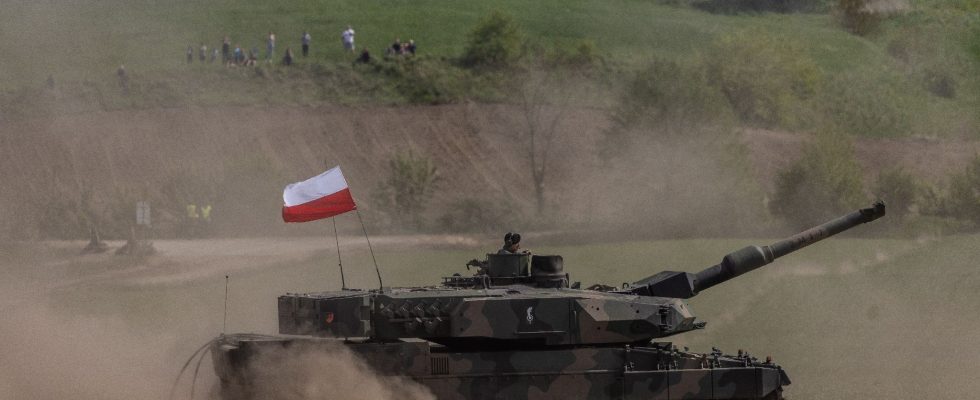Restore Poland’s reputation as best it can. This is the mission that its president, Andrzej Duda, gave itself, the day after a controversial outing by its head of government, Mateusz Morawiecki, who announced – in the middle of the electoral campaign – that Warsaw was stopping delivering weapons to the Ukraine. “In my opinion, the Prime Minister wanted to say that we are not transferring to Ukraine the new weapons that we are acquiring to modernize the Polish army,” the head of state declared to the TVN24 channel. .
The Polish communication, unprecedented in the Western camp, comes at a bad time. President Volodymyr Zelensky was at the UN in New York this week to plead in favor of prolonged support, particularly military support, from his allies to his country. This did not prevent Poland from breaking ranks by asserting that there will be no new deliveries from it, with the exception of those agreed “previously” – and, again, this is about ‘a clarification provided by the government after Morawiecki’s initial exit.
On closer inspection, however, it is unclear whether this will have much impact for Ukraine in its conduct of the war against Russia. Certainly, Poland has proven to be a crucial supplier of military equipment. A former member of the Warsaw Pact, it is its main supplier of tanks, mainly Soviet-designed models that the Ukrainian military is used to: 280 T-72s and 60 PT-91s, a Polish derivative of the T-72 (plus 14 Leopard 2A4, of German manufacture), counted the Polish Center for Oriental Studies.
Poland also supplied more than a hundred Soviet BWP-1 infantry armored vehicles, as well as around a hundred examples of the most modern KTO Rosomak – 200 must ultimately be supplied, of which 100 have been ordered from the manufacturer Polish company which manufactures them, thanks to European and American funds. Added to this are dozens of artillery pieces, including the AHS Krab (18 donated and 54 ordered via Western financial aid).
An unprecedented Polish rearmament
Without forgetting 14 MIG-29, a fighter bomber which already equipped the Ukrainian air force. “Poland was one of the first countries to supply jet planes in March and followed up with others in May,” said Pietro Bomprezzi, a researcher at the Kiel Institute for the World Economy, who is carrying out a careful count of aid to Ukraine. It is one of the five main donors, having committed more than 3 billion euros in military aid.” Against 500 million euros committed by France, according to the Kiel Institute.
However, Ukraine probably did not have much more to hope for from Poland in terms of heavy equipment. “It delivered a large part of the Soviet equipment which could be important for the Ukrainians, but it was also of interest for the Polish military, who can thus claim European funding, explains Yohann Michel, analyst at the International Institute for Strategic Studies (IISS). This allowed them to legitimize the replacement of old equipment with new equipment.”
Poland has embarked on an unprecedented rearmament plan. It signed contracts with South Korea to acquire 288 K239 multiple rocket launchers, 212 K9 self-propelled guns (48 have already been delivered), a thousand K2 tanks (820 will be produced in Poland) and 50 FA- combat aircraft. 50 – almost 12 billion euros in orders. Not to mention the signing of contracts with the United States for 486 Himars rocket launchers, 96 Apache helicopters, 32 F-35 combat planes, 366 Abrams tanks and Patriot anti-missile systems, for several tens of billions of euros.
“We know that the Kremlin leaders have decided to rebuild the Russian Empire. Our goal is to create a situation in which a strong Polish army can really deter the aggressor,” explained Defense Minister Mariusz Blaszczak. “Poland believes that it is on the front line facing a Russian threat experienced on a daily basis, argues Yohann Michel. It believes that it cannot be as stripped down as other countries in Western Europe.” There is therefore no longer any question of providing a lot of equipment to Ukraine, even if it uses it to weaken the much-feared Russian army.
